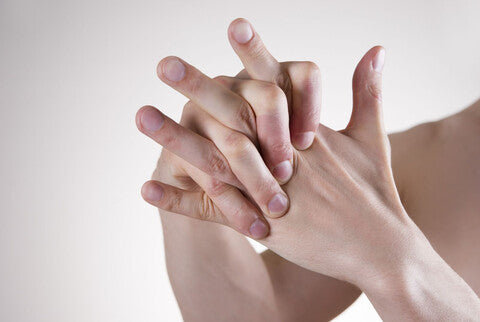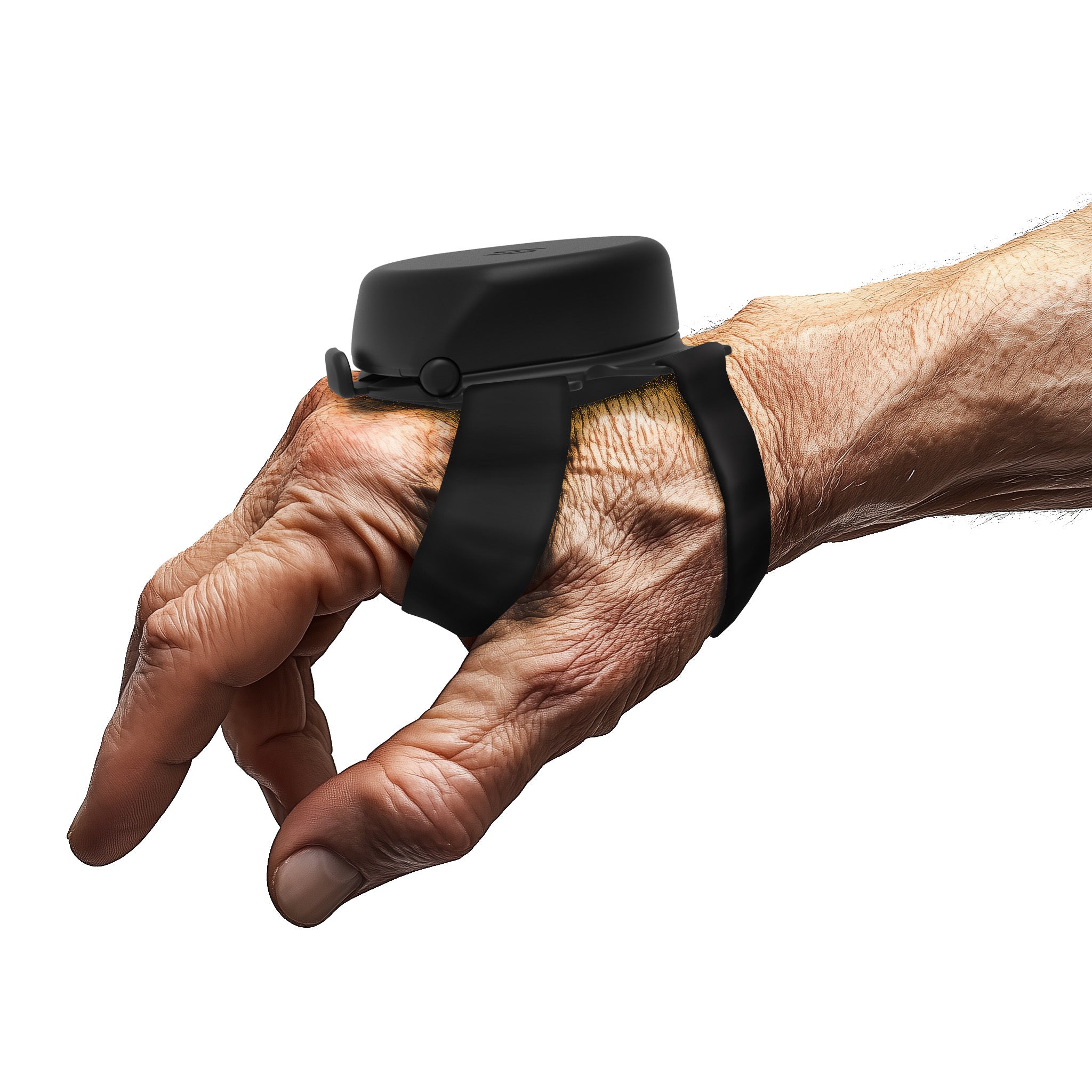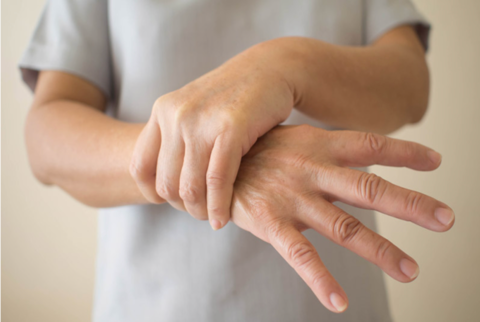Hand tremors are a common condition among older people. It also occurs as a result of different reasons. Diseases like Essential Tremor, multiple sclerosis, hyperthyroidism, and stress can all lead to hand tremors. The tremors occur while the hand is at rest or when the hand is in a certain position for a long period.
Tremors indicate a problem with the central nervous system, which impacts muscles and nerves. Hence, it’s important to seek help immediately if you notice that your hands shake involuntarily. Hand tremors are not life-threatening but can disrupt daily activities like drinking, writing, and eating. The treatment for hand tremors depends on the underlying cause, so finding the right cure is crucial. However, aside from medications and surgery, some hand and wrist exercises for shaky hands may reduce your symptoms. This blog post addresses the hand or wrist exercises for Essential Tremor, how to do them, and what the best Essential Tremor treatment exercise is for you.
Keynote Questions About The Topic
How to stop shaky hands exercise?
Exercises like squeezing a stress ball, using hand grips, or doing wrist curls can improve hand strength and stability and stop hand shaking. Additionally, relaxation practices like deep breathing, yoga, and meditation can also help by managing stress and anxiety, which frequently lead to hand tremors.
What is the best exercise for hand tremors?
For people with hand tremors, exercises that target hand strength, coordination, and fine motor abilities are particularly beneficial. In addition, honing skills that call for precise motions, like painting or playing an instrument, may assist in reducing hand tremors. These activities can form part of exercises for Essential Tremor that support long-term management.
Targeted Exercises to Reduce Hand Tremors
Exercising can help relieve hand tremors by reducing muscle tension and promoting overall body relaxation. A study has shown that increased resistance training of the arms helps patients suffering from Essential Tremor improve their motor skills. However, not all exercises reduce tremors. Your doctor may suggest a home routine or physical therapy to manage symptoms. Incorporating Essential Tremor treatment exercise options into these routines can further improve outcomes.
Whole-Body Fitness for Enhanced Tremor Control
Regular physical activity boosts dopamine levels, reduces stress, and improves overall health. The 2018 Physical Activity Guidelines Advisory Committee Scientific Report advises that individuals should engage in moderate to intense physical activity for 150 to 300 minutes weekly. This physical activity can be running, jogging, going to the gym, doing yoga, or whatever activity you choose. All that matters is that you move your body in a certain way regularly.
Stress can worsen hand tremors, but exercise helps reduce stress. If you have hand tremors, make it a habit to exercise regularly. It will improve your overall health condition and decrease your hand tremors. Many people include exercises for shaky hands in their weekly fitness plans for added benefit.
Exercises for hand tremors and how they can be beneficial:

Weight-bearing Exercises
Exercises that involve bearing weight with your hands strengthen the upper extremities and improve a person’s steadiness. Some weight-bearing exercises that improve hand tremors include planks, push-ups, shoulder lifts, and biceps curls.
Regular weight-bearing exercises temporarily reduce symptoms of Essential Tremor and can be a valuable Essential Tremor treatment exercise method.
Exercise With Adaptive Equipment and Tools
Various types of adaptive tools or equipment target hand tremors, and the exact type an individual can use depends on the severity of the condition. Most people struggle with writing or using utensils because of hand tremors, which can increase the weight and diameter of writing tools or utensils. You can use weighted tools for stability or adaptive equipment to make tasks easier. Examples include elastic shoelaces to eliminate the need for tying, long-haired combs for hair grooming with elbows tucked to the side, automatic jar openers to open tight jars, etc.
See a physical therapist for a more personal recommendation on the most effective way to reduce hand tremors. They have better knowledge and can incorporate this hand exercise equipment with physical therapy, including exercises for Essential Tremor.
Exercises for Hand Tremor
Here are some exercises that help reduce hand tremors. They include the following:
1. Finger Tap
This is a simple-to-do hand exercise that can be done anywhere. It helps to build control over your hand and finger movement. Finger tap exercise keeps you engaged and focuses on controlling movement.
It involves tapping your index finger to the top of your thumbs on both hands. Next, tap your middle finger on the upper part of your thumb on both hands. Next, do the same formation for your ring finger and small finger. Finish up by doing a reversal of the motion on both hands. Shake your hands and repeat the process. This is one of the most effective exercises for shaky hands.
2. Finger Bend
Bending your fingers is another simple exercise that can help reduce hand tremors. Simply bend your fingers on a flat surface until you can feel the stretch. Also, you can bend your fingers to the bottom of your palm, one after the other, or at once.
3. Wrist Flexion and Supination
Wrist flexion exercises, particularly when combined with supination (rotating the palm upward), are beneficial for improving wrist and forearm strength. Strengthening these areas can stabilize hand movements and improve motor control.
According to studies on physical therapy for tremor management, resistance training and range-of-motion exercises, such as wrist flexion and rotation, help improve hand stability and reduce tremor severity.
Adding light weights or resistance bands to these exercises can further enhance their effectiveness by improving proprioception (body awareness) and coordination.
Wrist flexion and supination exercises are supported by research as a beneficial component of a tremor management plan.
4. Thumb Bend and Extension
Both exercises help to increase the range of motion of the thumb. In the thumb bend exercise, you simply bend your thumb across your palm to reach the bottom of your small finger. Hold the position for 30 to 60 seconds and repeat four times on both hands.
The thumb extension exercise involves the use of a rubber band. You simply wrap it around your hand towards the ends of all the finger joints. Next, move the thumb slowly as far away from the rest of your fingers as it can go and hold the position for up to 60 seconds. Repeat the exercise up to 10 times on both hands.
5. Supination and Pronation
Supination involves rotating the muscles towards the outside circle so that the palms face upwards. Pronation is the opposite and involves rotating the limb muscles towards the inside so that the palms face downwards.
6. Tight Fist
Clenching and unclenching fists or using stress balls helps improve hand muscle tone and coordination. Repeated movements also stimulate neural pathways involved in motor control, potentially reducing the intensity of tremors during precision tasks.
Research on motor skill exercises for Essential Tremor and Parkinson's tremors indicates that simple repetitive movements can help retrain fine motor skills and improve the strength and endurance of hand muscles. While this exercise aids in muscle control, it does not directly address the underlying neurological causes of tremors.
Tight fist exercises are a simple, accessible way to strengthen hand muscles and improve motor control, and are considered useful exercises for shaky hands.
7. Rubber Ball Exercise
Squeezing a rubber ball is a widely recognized exercise for improving grip strength and fine motor control. It can help stabilize hand movements by strengthening the muscles in the hands and fingers.
This exercise engages motor neurons and muscle groups, promoting better neuromuscular control. While it doesn't directly address the neurological causes of tremors, improving muscle tone and control may help mitigate the impact of tremors on daily tasks.
This exercise is a practical recommendation for individuals with mild to moderate hand tremors.
8. Hand Dumbbell Exercise
Though last on the list, the hand dumbbell exercise is one of the most effective exercises for reducing hand tremors. It helps the nerves relieve fatigue and stress caused by tremors or any disease condition.
Simply spread your hand with your palm facing upwards and take the dumbbell, 1 to 3 pounds. Next, position your hands and wrists over the table's edge and place the weights on your hands as you slowly move your wrists up and down. Do this repeatedly for about 20 times.
A licensed physiotherapist can prescribe the right exercise regimen and utmost care to manage hand tremors. Some of the techniques include:
-
Biceps curls
-
Shoulder shrugs
-
Hydrotherapy
How Steadiwear Complements Exercise for Hand Tremors
Managing hand tremors often requires a multifaceted approach, combining physical exercises with assistive tools for optimal results. Steadiwear’s Steadi-3 glove serves as a powerful complement to exercise routines designed to improve hand strength, coordination, and motor control. Here’s how:
-
The Steadi-3 glove provides immediate stabilization, reducing the intensity of tremors while performing exercises like wrist flexion, rubber ball squeezes, or finger taps.
-
Its advanced wrist stabilization allows users to focus on their exercises without interference from uncontrolled hand movements.
-
While exercises help build strength and reduce tremor severity over time, the Steadi-3 glove offers real-time support, enabling individuals to carry out everyday tasks like writing or eating with ease.
-
This combination ensures that users can gradually regain independence and confidence in their motor skills.
-
The battery-free design of the Steadi-3 makes it lightweight and easy to wear during exercise or leisure activities. Unlike medication or surgical options, it offers a safe, non-invasive way to manage tremors alongside physical therapy or at-home exercise regimens.
-
Exercises aim to improve neuromuscular control, but results take time. SteadiWear bridges this gap by providing instant tremor reduction, giving users an immediate improvement in quality of life as they work toward long-term stability through exercise.
By combining the benefits of targeted exercises with the innovative design of the Steadi-3 glove, individuals can take a proactive approach to managing hand tremors, regaining control, and enjoying a higher quality of life. Explore the SteadiWear solution today and see how it complements your exercise routine for better tremor management.
Conclusion:
Managing hand tremors requires a multifaceted approach that combines targeted exercises for shaky hands, lifestyle changes, and assistive devices like the Steadi-3 glove for optimal results. Regular hand and wrist exercises can strengthen muscles, improve motor control, and gradually reduce the intensity of tremors. Lifestyle modifications, including reducing caffeine intake, managing stress, and following a balanced diet rich in magnesium and B vitamins, further support neurological health.
However, exercises and lifestyle changes take time to show results. Assistive devices like the Steadi-3 glove bridge this gap by offering immediate tremor reduction. Its innovative smart fluid technology and ergonomic design provide instant stabilization, enabling users to carry out daily tasks with confidence. By integrating physical therapy, a proactive lifestyle, and advanced technology, individuals can regain independence and enjoy a significantly improved quality of life.
Resources:
-
https://www.nationalmssociety.org/understanding-ms/what-is-ms/ms-symptoms/tremor
-
https://www.mayoclinic.org/diseases-conditions/essential-tremor/symptoms-causes/syc-20350534
-
https://www.verywellhealth.com/tremors-in-multiple-sclerosis-2440817
-
https://www.mssociety.org.uk/about-ms/signs-and-symptoms/tremor/causes-and-effects-of-tremor
-
https://www.webmd.com/parkinsons-disease/ss/slideshow-reasons-your-hands-are-shaking



